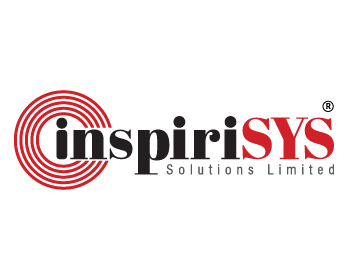When people think about brand building, they often picture logos, campaigns, or marketing teams. But the most trusted voices behind a brand come from within — its employees. According to Forbes, 76% of businesses have implemented employee advocacy programs, reflecting a growing recognition of the value that authentic employee voices bring in building trust. Their genuine stories and day-to-day experiences carry more weight than any marketing campaign ever could. That’s the real strength of employee brand advocacy.
More organizations are starting to recognize this shift. Instead of relying solely on traditional messaging, they’re empowering employees to act as brand ambassadors across social media and professional platforms. In this article, we break down what employee advocacy really means, how to build a culture that supports it, and why it should be part of your strategy in 2025.
What is Employee Brand Advocacy?
Employee brand advocacy involves employees actively championing and endorsing their employer’s brand by sharing positive information about the company, its products, and core values. This advocacy happens both online—through social media and professional networks—and offline, such as at industry events or networking opportunities.

It includes promoting the company’s culture, work environment, and employee experiences, as well as representing the organization positively to external stakeholders. Employee brand advocates become authentic voices that help build trust and strengthen the company’s reputation from within.
The Fundamental Pillars of Employee Brand Advocacy
Your team members aren't just employees; they're your brand's strongest advocates. But what exactly makes their advocacy so impactful? Let's explore the key components that drive successful employee brand advocacy.
Fostering Authentic Employee Advocacy:
Genuine belief in the company and its offerings is paramount. Authentic advocacy stems from employees who truly support their organization.
Encouraging Voluntary Participation:
Effective advocacy cannot be forced. It emerges from a sincere desire to share positive experiences and satisfaction.
Leveraging Social Media Engagement:
In today's digital world, social media is a powerful platform for spreading brand messages. Empowering employees to share company updates, achievements, and success stories helps amplify your reach.
Providing Training and Guidelines:
Equipping employees with the necessary training and guidelines ensures consistent and accurate representation of the brand. This alignment strengthens advocacy efforts and reinforces company values.
Creating Mutual Benefits:
Employee advocacy should be a mutually beneficial endeavor. While employees contribute to building the company's brand, organizations should reciprocate by recognizing and rewarding their efforts through acknowledgement, incentives, or other forms of appreciation.
Why Employee Advocacy Matters
In an era where trust drives decisions, engaged employees’ voices hold greater influence than traditional marketing or paid media. Employee advocacy plays a key role in shaping your brand’s reputation both internally and externally. When done effectively, it enhances brand credibility, increases employee engagement, and strengthens recruitment and retention efforts.
Let’s delve into why employee advocacy is gaining traction across organizations.
- Unlocking Business Benefits: Employee advocacy offers a multitude of advantages for companies, ranging from tangible improvements in marketing and sales to intangible enhancements in brand credibility and thought leadership.
- Expanding Brand Reach and Accessibility: When employees actively engage in advocacy, the collective reach of their social networks amplifies the brand's visibility. This expanded reach not only increases brand exposure but also makes the company more approachable and relatable to potential customers.
- Boosting Sales Performance: In today’s social media-driven market, employee advocacy influences purchasing decisions. By sharing relevant content within their networks, employees enhance brand credibility and position the company as a trusted expert, which can lead to higher sales.
- Attracting Top Talent: With competition for skilled candidates intensifying, employee advocacy helps showcase your company’s culture, values, and employee experiences—making your organization more attractive to prospective hires.
- Building Brand Credibility and Trust: Beyond its impact on sales and recruitment, employee advocacy is key to building trust. As consumers increasingly rely on peer opinions when evaluating brands, authentic advocacy from employees becomes a valuable asset in establishing trustworthiness.
- Fostering Thought Leadership: Moreover, employee advocacy empowers employees to position themselves as thought leaders within their respective industries. By creating and sharing insightful content, employees not only elevate their brands but also enhance the company's reputation as a leader in its field.
How to Implement an Effective Employee Advocacy Program

An employee brand advocacy program is a carefully structured initiative aimed at tapping into the influence of employees to promote and improve their employer's brand reputation. The primary goal is to align employee advocacy efforts with the company's overall branding strategy. Well-executed programs not only elevate brand recognition but also cultivate a favourable internal atmosphere, as employees perceive themselves as valued contributors aligned with the organization's objectives.
But how can we put this employee advocacy program into action? Let’s take a closer look at practical methods to build and sustain a successful advocacy initiative.
- Define Clear Objectives
Start with specific goals—whether it's increasing brand visibility, attracting top talent, or improving internal engagement. Clear objectives give the program direction and allow for measurable success. - Secure Leadership Support
Gain active endorsement from leadership to emphasize the program’s strategic value. Visible support from executives boosts credibility and encourages wider participation. - Provide Training and Brand Guidelines
Equip employees with essential knowledge through training on brand messaging, social media best practices, and the purpose of advocacy. Clear guidelines reduce risk and improve message consistency. - Identify and Involve Brand Ambassadors
Select enthusiastic employees who can serve as early advocates. Involving individuals from various departments ensures diverse representation and builds broader engagement. - Equip with Tools and Templates
Offer ready-to-use resources such as content libraries, posting templates, and suggested hashtags. Easy access to tools simplifies participation and maintains consistency. - Implement Recognition and Rewards
Establish a system that publicly acknowledges employee contributions. Whether through incentives, awards, or shout-outs, recognition encourages ongoing advocacy. - Maintain Ongoing Communication
Keep employees engaged with regular updates, success stories, and new content opportunities. Consistent communication strengthens connection and commitment. - Leverage Technology Platforms
Use advocacy platforms or internal tools to streamline content distribution and track employee engagement. Technology enhances usability and provides real-time analytics. - Set Measurable Goals and Monitor Progress
Define KPIs like engagement rates, content reach, or referral traffic. Ongoing evaluation and feedback allow for informed adjustments and program optimization.
Key Best Practices to Boost Employee Branding Advocacy in 2025
Once your advocacy program is in place, the focus shifts to maintaining momentum and driving continuous engagement. In 2025, organizations are embracing dynamic, people-first tactics to empower employees as authentic brand ambassadors. The following best practices highlight creative and effective ways to keep your advocacy program active, visible, and influential across platforms.

Content from Employees
Encourage employees to create and share authentic content—blogs, social media posts, or video testimonials. Their unique perspectives humanize your brand and resonate deeply with audiences.
Multiple Advocates Across Departments
Include a diverse mix of voices from various teams and levels. This broadens your reach and builds trust by showcasing different facets of your organization.
Social Media Takeovers
Allow employees to manage corporate social handles for a day or campaign. These takeovers offer genuine, behind-the-scenes insights while amplifying employee voices.
Ongoing Training and Upskilling
Host periodic sessions to refresh advocacy skills, introduce new tools, and reinforce brand values. Continued learning keeps advocacy efforts aligned and effective.
Employee Recognitions
Highlight outstanding advocacy efforts through internal communications or company events. Recognition boosts morale and motivates peers to join in.
Employee Stories
Share personal narratives that reflect company values and employee experiences. These stories foster emotional connections and shape a relatable employer brand.
Webinars and Events
Invite employees to speak at or host webinars, panels, and internal events. This positions them as thought leaders and extends your brand’s authority.
Advocacy Ambassadors
Nominate dedicated employees as program champions. These individuals lead by example, mentor peers, and help maintain advocacy momentum across the organization.
Gamified Advocacy Challenges
Launch contests with clear objectives—such as most engaging post or highest reach. Incentivized challenges bring energy to the program and encourage creative participation.
8 Initiatives to Boost Employee Brand Advocacy in 2025
Beyond standard playbooks, employee advocacy thrives when powered by creativity, empowerment, and visibility. These eight forward-thinking initiatives help organizations unlock deeper engagement by turning everyday employees into influential brand storytellers.

1. Personal Branding Bootcamps
Host internal workshops that help employees build their own personal brand in alignment with company values. Focus on optimizing LinkedIn profiles, storytelling techniques, and thought leadership publishing. When employees grow as individual professionals, their advocacy becomes more confident and authentic.
2. Advocate Spotlights in External Channels
Feature top employee advocates in external-facing platforms—like corporate blogs, client newsletters, podcast episodes, or event panels. Highlighting employee voices in outward-facing brand moments signals trust, celebrates their contribution, and expands the brand’s reach through genuine representation.
3. Real-Time Advocacy Moments
Create a system that encourages employees to share real-time milestones—project launches, team wins, or behind-the-scenes moments—through guided, pre-approved formats. Quick-sprint campaigns triggered by company news or achievements enable timely and authentic engagement across platforms.
4. Internal Influence Index
Develop a gamified internal leaderboard that tracks advocacy metrics like content shares, engagement, and referrals—not to compete, but to encourage visibility and progress. Offer learning credits, leadership lunches, or early feature access for top contributors, celebrating influence with purpose.
5. Digital Advocacy Toolkit with AI Assist
Provide a dynamic digital toolkit that includes not only curated content and templates, but also AI-powered suggestions for post timing, tone optimization, and audience targeting. Empowering employees with smart tools removes friction and maximizes the impact of every shared message.
6. Reverse Mentoring Advocacy Program
Pair younger digital-native employees with senior leaders to co-create brand stories for platforms like LinkedIn or video series. This two-way learning exchange blends generational insight with leadership credibility, generating more inclusive and authentic narratives.
7. 'Day in the Life' Mini-Documentaries
Create short-form video segments where employees across roles and regions film a day in their work life. These can be lightly edited and shared on company pages and social channels. It brings transparency, humanizes teams, and sparks advocacy organically.
8. Inclusive Hashtag Campaigns
Empower employees to amplify their unique stories by participating in branded hashtag campaigns focused on diversity, equity, and inclusion. Encourage sharing personal experiences, cultural celebrations, or community initiatives using a unified, inclusive hashtag (e.g., #LifeAt[YourCompany], #VoicesOf[BrandName], or a custom DEI-driven tag). These campaigns foster a sense of belonging while showcasing the company’s inclusive culture to a wider audience.
Measuring Employee Advocacy Plan

Evaluating the performance of your employee advocacy program is essential to understand its impact, optimize strategy, and ensure long-term success. By tracking meaningful metrics, organizations can assess engagement, identify gaps, and demonstrate ROI. Here are some essential metrics to consider:
Assessing Employee Participation Rates: Determine the level of engagement among your employees by tracking participation rates in the advocacy program. A high participation rate indicates an enthusiastic and engaged workforce, while a low rate may signal the need for additional support or incentives to encourage participation.
Evaluating Content Shares: Monitor the frequency and volume of content shares by employees to gauge the effectiveness of your content strategy. This helps assess whether the content is engaging, accessible, and aligned with employees’ interests and audiences.
Gauging Social Reach and Impact: Calculate the total audience size reached through employee advocacy efforts to measure the program's visibility and impact. A broad social reach signifies that your employees are successfully amplifying your brand's message and increasing its exposure to potential customers.
Analyzing Engagement Rates: Beyond shares, assess the level of engagement generated by shared content, including likes, comments, and shares. High engagement suggests that posts are resonating and driving meaningful interaction.
Measuring Website Traffic: Use UTM parameters or analytics tools to track the volume of website traffic coming from employee-shared content. This helps quantify digital traction and brand visibility.
Tracking Business Outcomes: Measure how many leads or conversions stem from advocacy-driven traffic. Connecting advocacy efforts to tangible business outcomes demonstrates strategic value.
Ensuring Employee Satisfaction: Conduct surveys or feedback loops to understand how employees feel about participating in the program. Their satisfaction directly impacts long-term advocacy and program authenticity.
Managing Program Costs: Review the investment in tools, training, and incentives compared to the program’s returns. A clear understanding of ROI ensures sustainable scaling and informed decision-making.
Top Employee Brand Advocacy Examples
Explore standout examples of companies that have successfully leveraged employee advocacy to amplify brand visibility, build trust, and create authentic engagement across digital platforms. These cases highlight what effective advocacy looks like in action.
1. Starbucks
Starbucks refers to its employees as “partners,” reflecting a culture of belonging and shared purpose. Through the #ToBeAPartner campaign and dedicated channels like Starbucks Partners on Instagram, employees are encouraged to share their work experiences and community stories. These authentic voices humanize the brand and build stronger connections with audiences. With clear guidelines and leadership support, Starbucks turns everyday moments into powerful advocacy touchpoints.
2. Adobe
Adobe allows employees to take over its Instagram account, sharing insights into their work, passions and personal lives. These takeovers offer a glimpse into diverse roles at Adobe, celebrating diversity and creativity while strengthening the brand’s emotional connection with its audience.
3. Trello
Trello, a mobile app facilitating team planning and project management, stands out for its engaging social media posts shared by employees. These posts not only reflect company pride but also convey to prospective employees that Trello offers an excellent work environment. Notably, the majority of Trello's workforce operates remotely, emphasizing that a successful employee advocacy program can thrive outside traditional workplace structures.
4. Electronics Arts
EA, known for developing FIFA, launched the EA Insiders program in 2014 to foster employee advocacy. Through this initiative, they aimed to connect employees and the gaming community, creating a culture of social sharing internally. With over 1000 participants, the program reached a collective audience of 1.1 million, enhancing engagement and excitement. Employees were incentivized through rewards based on engagement, further driving their investment in the program.
5. LinkedIn Life
The #LinkedInLife campaign is widely used by employers to showcase their employees as authentic brand ambassadors, leveraging employee advocacy to promote company culture and values. This initiative allows companies to highlight real employee stories, achievements, and workplace experiences, helping attract top talent and enhance employer branding. By using employees as the faces and voices of the organization, businesses amplify their employer brand and build stronger connections with both current and prospective employees.
Summing up
In an era where authenticity drives buying decisions and talent attraction, harnessing the genuine voices of your workforce can set your brand apart in crowded markets. Organizations that activate their employees as advocates unlock unparalleled engagement, trust, and influence, assets that traditional marketing can’t replicate. To thrive amid rapid digital evolution and shifting consumer expectations, embedding employee advocacy into your core strategy isn’t optional but essential for sustained relevance, competitive advantage, and meaningful growth.



